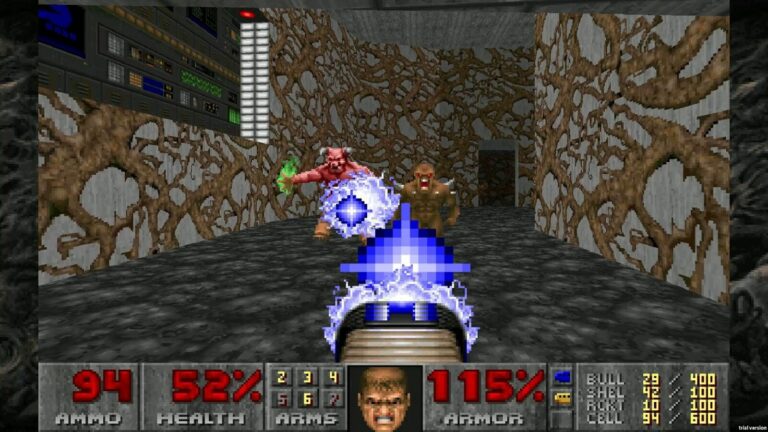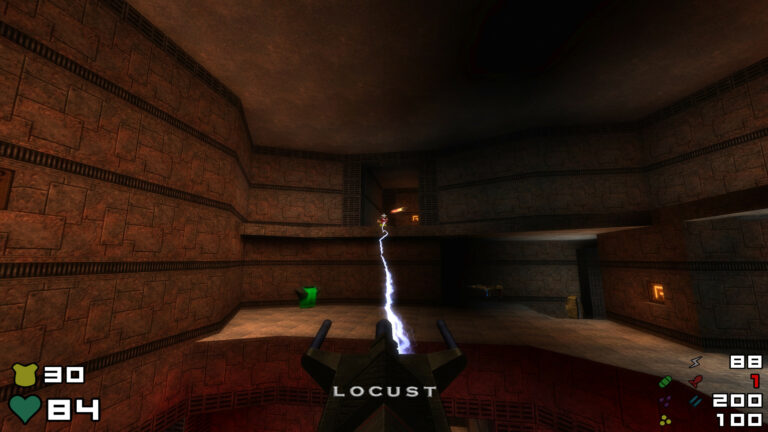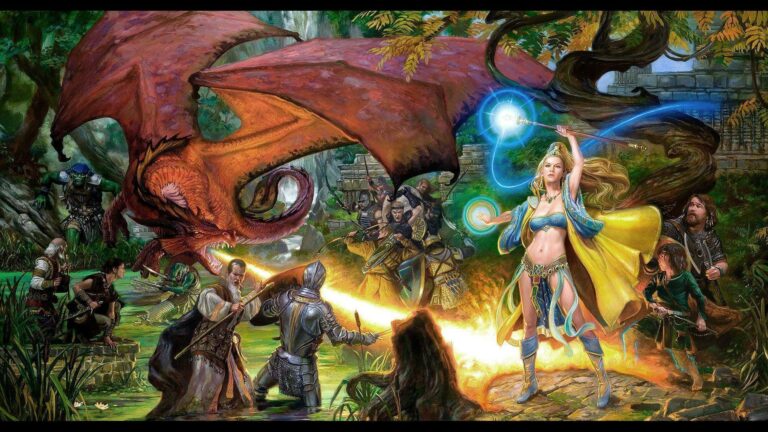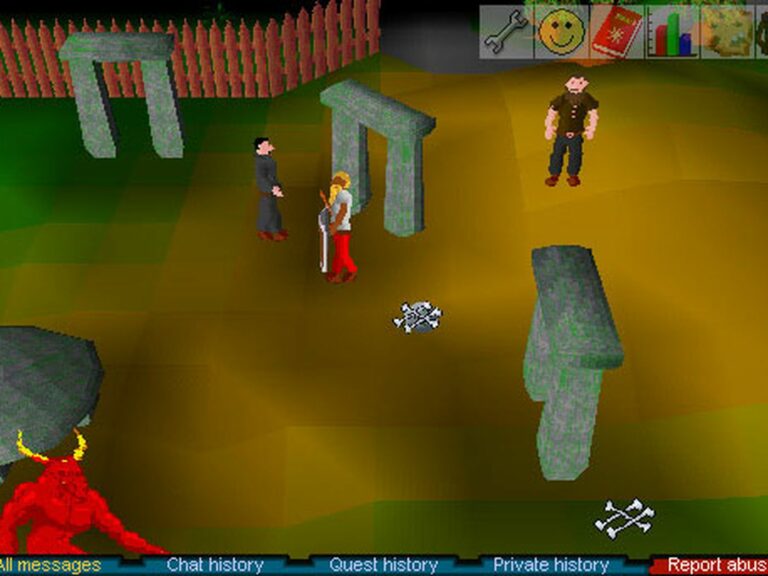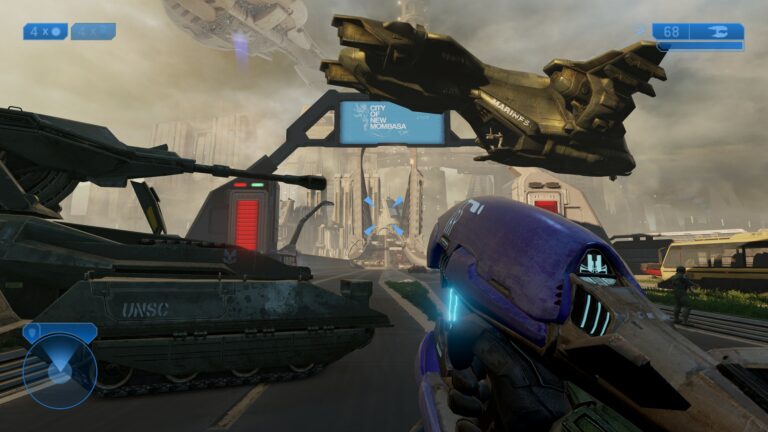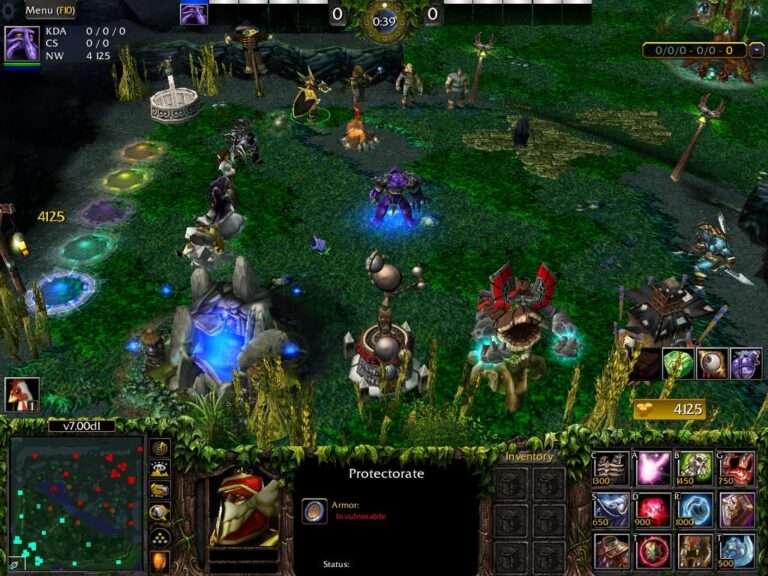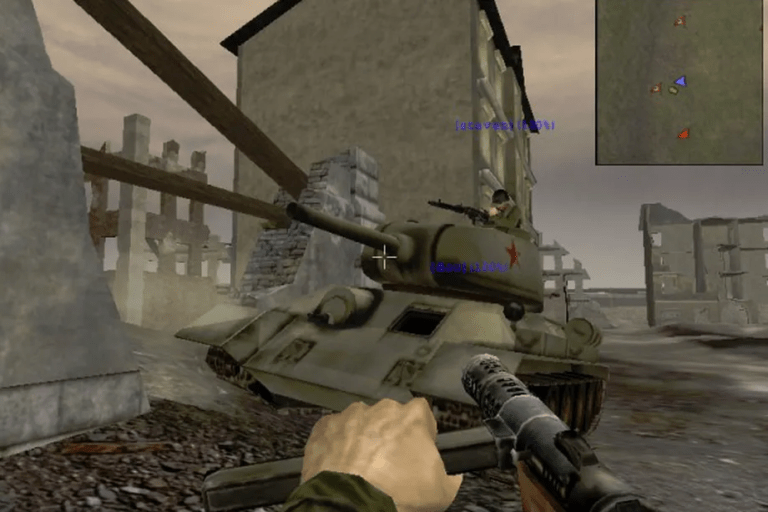Contemporary Trends in Online Multiplayer
In early 2012, a Kiwi soldier named Dean Hall released a mod for Bohemia Interactive’s tactical military sim Arma 2, creating an online multiplayer open world where players had to survive a zombie apocalypse. Named DayZ, the mod featured an unprecedented degree of realism – players had to eat, sleep and maintain a steady temperature, and the basic need to survive both the zombies, and the humans in the game world, became the sole focus of players. In DayZ you could either team up with others to stand a better chance of survival, or shoot and loot them for their gear, rations and medical supplies – if the game had any goal to speak of, it was to not die.
The early 2010s continued the tradition of innovation in multiplayer – a trend we discussed in depth in our previous blog. In the 2010s, games such as Minecraft, GTA Online and Final Fantasy XIV would each offer their own spin on the multiplayer experience. Another trend to emerge in the first half of the decade was the shift to mobile multiplayer, where studios would release innovative games that made meaningful use of mobile technology, such as Pokemon Go, with its augmented reality-based gameplay. The dominant trend in the latter half of the 2010s was the rise of the hero shooter and the battle royale, two genres that became wildly popular across platforms from PC and console to mobile. Perhaps the most significant recent trend in multiplayer, however, has little to do with game development and everything to do with the state of our society – online multiplayer experienced tremendous growth during the lockdowns of the pandemic, and we will discuss this as well in this blog.
2010-2016: Innovation and Mobile Multiplayer
In the first half of the 2010s, developers created innovative multiplayer games for consoles and PC, and also shifted toward multiplayer on mobile. These two trends – continued innovation in multiplayer and the shift toward mobile multiplayer, will be covered in this section.
Unique Multiplayer Titles Refresh the Genre
The decades between 1990-2010 had seen unique genres native to multiplayer, but the first half of the 2010s would see developers taking multiplayer to directions that defied traditional expectations.
Minecraft (2011)
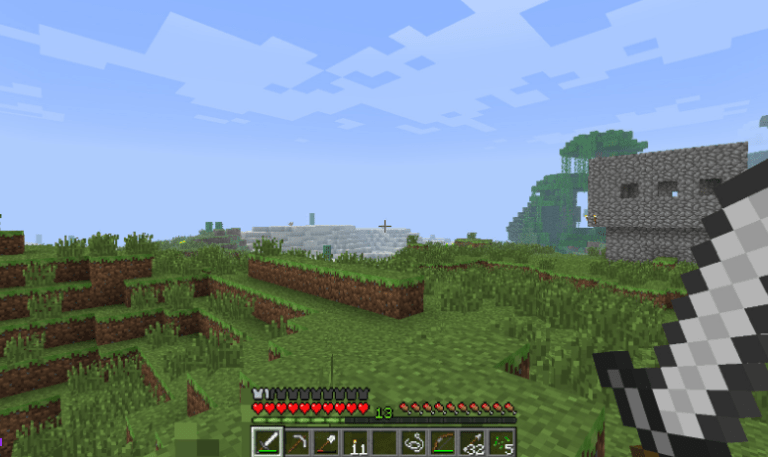
Soon after the release of Minecraft 1.0 in 2011, it would become a highly popular multiplayer game. Minecraft’s multiplayer is distinctive in that it allows players to collaborate on mining for resources and working together to build increasingly complex and elaborate structures. While it has other multiplayer modes, Minecraft’s collaborative multiplayer was unlike any other style seen before – no game had ever enabled a mode where players just worked together to build incredible structures: there is no adversarial element involving combat in collaborative mode. Minecraft does offer more traditional gameplay in Minecraft Realms, where you can team up with others and go on adventures, and a PvP mode called BedWars, where you defeat other players by destroying their respawn point – a bed.
DayZ (2012)
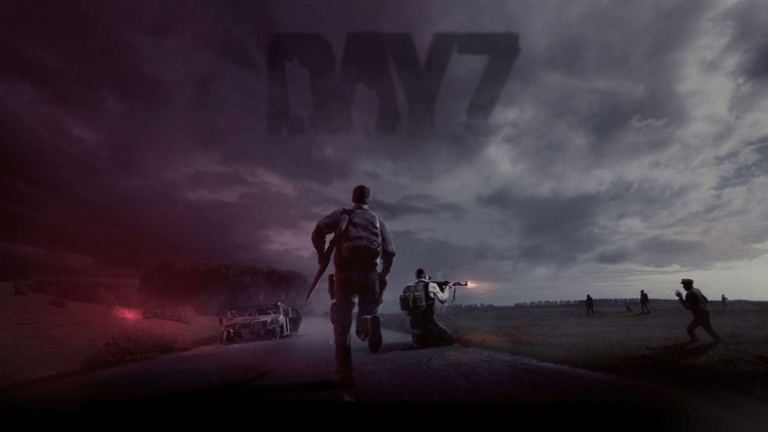
DayZ’s realism was unprecedented in gaming, let alone online multiplayer. Apart from having to eat and sleep, players were vulnerable to fractures, drinking poisoned water could result in cholera and a zombie bite or bullet wound could send players into shock. The hostile conditions made for highly tense encounters with other players, who might simply choose to kill you, or decide on the spur of the moment to cooperate and team up with you. Dayz also features permadeath, meaning no matter how much loot and experience you have, you restart from scratch when you die. This adds yet another layer of immersion to what is already a hyper-realistic survival sim. Games such as DayZ are referred to as PvPvE (player vs player vs environment) because they combine cooperation and competition set against challenges posed by the game world.
Within the first three months of launch, DayZ had a million unique users and also boosted sales of Arma 2, the base game required to play the mod, by 500 percent, leading the CEO of Bohemia Interactive to admit that Dayz was the primary driver of Arma 2 sales.
Dean Hall was soon hired by Bohemia Interactive to create a standalone version of the game, which would be released on Steam Early Access in 2013, where the alpha version would sell a million copies by 2014. It also influenced games like Rust and ARK: Survival Evolved, and cast a long shadow on the development of survival games.
Dota 2, GTA Online and Final Fantasy XIV: A Realm Reborn (2013)
In the span of a single year, gamers got three of the most enduringly popular online multiplayer games: the MOBA, Dota 2, the MMORPG, Final Fantasy XIV, and GTA Online, which can be considered an evolution of what MMO experiences could offer, with its plethora of activities and challenges.
Valve released Dota 2 in 2013 and went on to host the most lucrative esports title in the world – the Dota 2 International, which now boasts a staggering prize pool of over $40 mn. Valve took an innovative approach to the free-to-play game’s premier esports title, crowdfunding it by the sale of skins, cosmetic upgrades and battle passes. Dota 2 is hailed as one of the most complex, balanced and challenging MOBA games and was ranked the best PC multiplayer game by IGN in 2013.
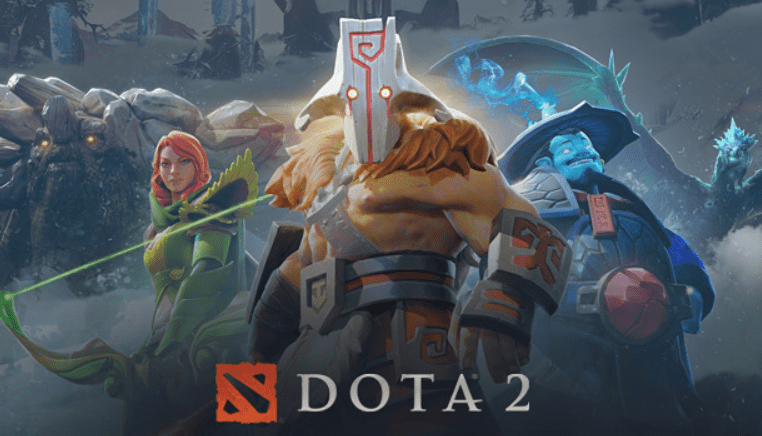
Set in the vast open world of Los Santos, GTA Online allows players to do just about anything they want, and Rockstar keeps releasing updates that expand the activities that players can engage in, introduce quality of life upgrades, and add even single-player missions. In GTA Online, you can take part in vehicle races, heists, and casino trips, run a criminal enterprise, buy homes, go to flight school, steal exotic cars, run around the city… and more – it’s a game containing countless games.
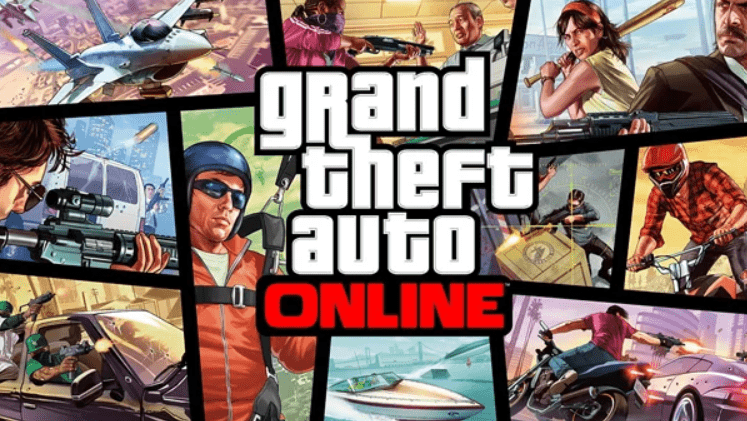
Final Fantasy XIV’s first iteration (2010) was a disaster, but Square Enix decided to resurrect it rather than abandon the project. The end result, released in 2013, is now a major MMORPG. Naoki Yoshida, tasked with reinventing FFXIV, streamlined many of its MMORPG elements: the developers set a low level cap, inviting players to continue playing the game in search of loot and resources, the armory system allowed players to change classes on the fly by equipping certain items, and Yoshida also pushed hard to bring high quality graphics to the MMO. The game also receives updates regularly, every 3.5 months, a cadence that ensures it remains fresh for gamers. It is termed one of the biggest games in the world as of 2022 by Eurogamer.

Destiny (2014)
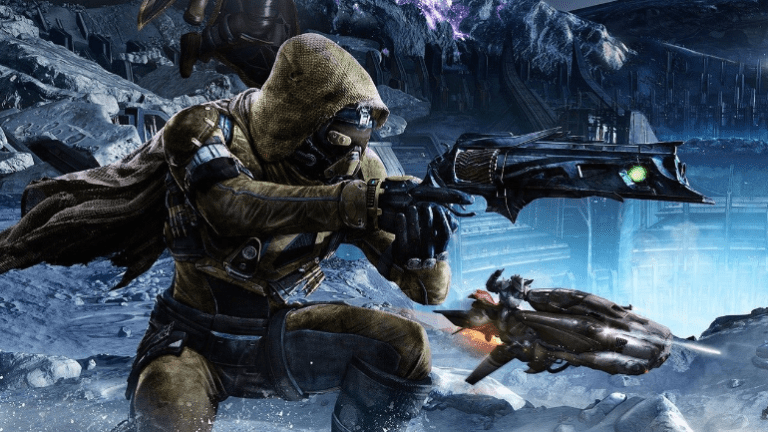
Destiny received quite a bit of criticism when it was initially launched, and it took a novel approach to addressing such critiques – listening to players. Unlike other games, Destiny’s patches, updates and expansions were direct responses to player feedback, with Bungie acting on what the community wanted rather than setting an update schedule purely based on its own agenda for the game. On its release, Destiny called itself a ‘shared-world shooter’ – the PvE element constitutes the majority of the game, while the PvP zones are equally appealing. Destiny features a unique networked mission architecture, something that Bungie has elaborated on in detail.
Destiny achieved a seamless blend of single-player, co-op and multiplayer, using a persistent world made up of public and private spaces. Multiplayer events might be triggered in a public space, or a friend might join in on co-op, while private spaces lock players into campaign goals. The two spaces flow together without interrupting the story.
Destiny made nearly $500 million dollars in pre-orders and day one sales, amassed over 20 million players a year after release, and was the best-selling new IP of 2014.
Rainbow Six Siege and Rocket League (2015)
On paper, Rocket League’s premise seems absurd – soccer (football) matches between player-controlled vehicles. After a low-key initial launch, the game gained a massive following thanks to its fast-paced, intensely competitive gameplay and sustained developer support. The game was also offered for free on the Playstation Plus service for about a month, increasing its visibility and making it the most downloaded PS4 game of 2016. The game received the Best Sports/Racing Game award at The Game Awards of 2015. When it went free-to-play in 2020, it crossed one million concurrent players.
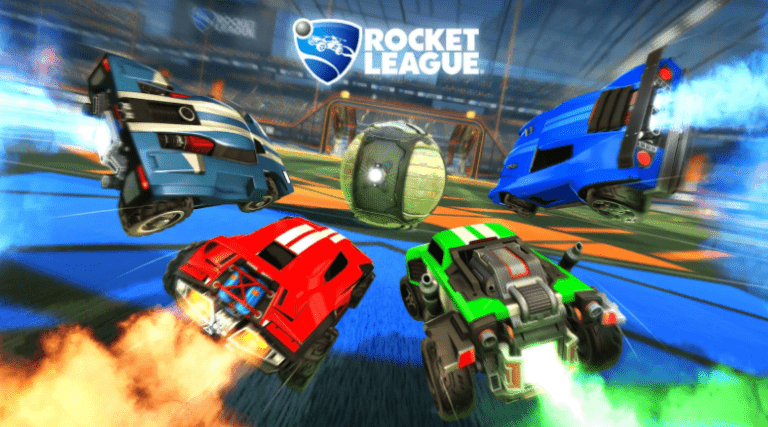
Rainbow Six Siege had a bad initial start but turned things around to become an important multiplayer FPS game emphasising strategy, taking a cue from Arma 3’s tactical elements. Ubisoft achieved one of the industry’s most impressive turnarounds by adopting a games-as-a-service model for Siege, releasing a slew of content updates and patches to bring the game up to scratch and eventually garnering 25 million users. The game also maximised its appeal by morphing into a hero-based shooter, giving playable characters unique abilities. Rainbow Six Siege is now a major esport.
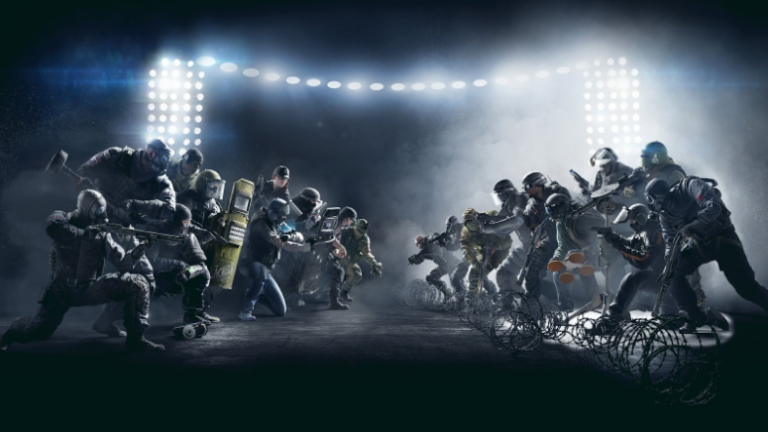
The Shift toward Mobile Multiplayer
As early as 2011, Mojang realised that Minecraft would work very well as a mobile game and released the Pocket Edition in 2011. The mobile Minecraft title had mostly the same feature set as the PC game, and would go on to become one of the top-grossing mobile game apps. The shift to mobile multiplayer had already begun.
Clash of Clans (2012)
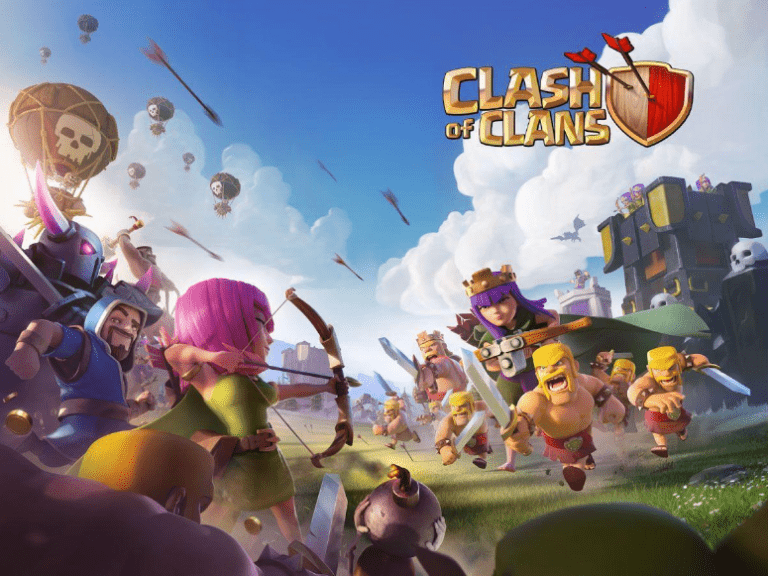
One of the earliest successful mobile multiplayer games was Clash of Clans, which offered complex team-based gameplay over mobile devices. Set in a persistent world, the player is a village chief. Raiding other villages for important resources, unlocking new troops and bolstering the defences of your own village against attacks form the core gameplay elements of the title. Players can also team up to form clans (of upto 50 players) and battle other clans, chat with friends and more. In 2021, Clash of Clans generated nearly $490 million in in-app purchase revenues, and remains the second most popular game by daily user counts in the US.
Hearthstone (2014)
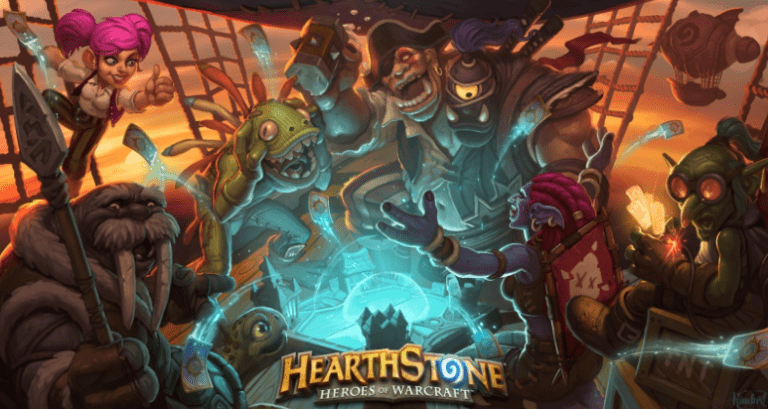
The free-to-play PC and mobile game Hearthstone: Heroes of Warcraft achieved an unexpected degree of success, proving that a digital collectible card game could be just as successful as similar games played with actual cards. Blizzard used the lore, characters and other elements of the Warcraft franchise to full effect to create a fun, fast-paced card game with eye-popping graphics. The developers worked hard to recreate the experience of a real card game with the user interface, digitising assets from the earlier physical World of Warcraft Trading Card Game. The game’s success is attributable to faithfully adapting a traditional deck-building experience in a digital environment, keeping games short, offering a variety of match types, releasing regular expansions with new cards, and even letting you admire your card collection with special views. Hearthstone reached 100 million players by 2018, had a user base of 23.5 million by 2020 and nearly 4 million players play it across platforms as of 2022. It has made more than $700 million since launch. It has its own esports scene as well.
Honor of Kings (Arena of Valor, 2015)
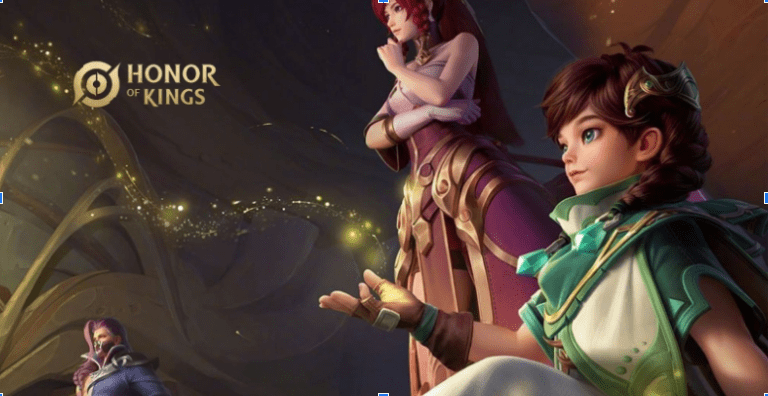
The mobile MOBA (Multiplayer Online Battle Arena) Honor of Kings is one of the most successful mobile games of all time, registering 100 million active users per day, becoming the first mobile game to make $10 billion in revenue, and becoming the leading mobile game app in China. Ironically, it might have never come about if Riot Games had agreed to parent company Tencent’s request for a mobile version of League of Legends. The LoL creators did not want to dilute the game’s brand with a mobile knock-off, and Tencent turned to another subsidiary, TiMi Studio Group, for a new mobile MOBA IP. The result was Honor of Kings, a MOBA game that features multiple competitive modes, a PvE mode and even a standalone mode when the player is offline. An international version, known as Arena of Valor, was released for Western regions in 2016, with greatly altered heroes to fit the target market. The MOBA has many key virtues – you can easily set up battles with friends, and the fast-paced stand-offs last just 15-20 minutes, The game had all the key MOBA elements but was still easier to master than Dota 2 or League of Legends, creating a low barrier to entry, and its seamlessly integrated social elements kept players engaged with each other. The massive success of the MOBA led Riot Games to reassess its stance on a mobile version of LoL – it would release League of Legends: Wild Rift, a modified version of LoL, for mobile in 2020. Since late 2021, Wild Rift has been drawing in about 15-20 million players each month.
Clash Royale and Pokemon Go (2016)
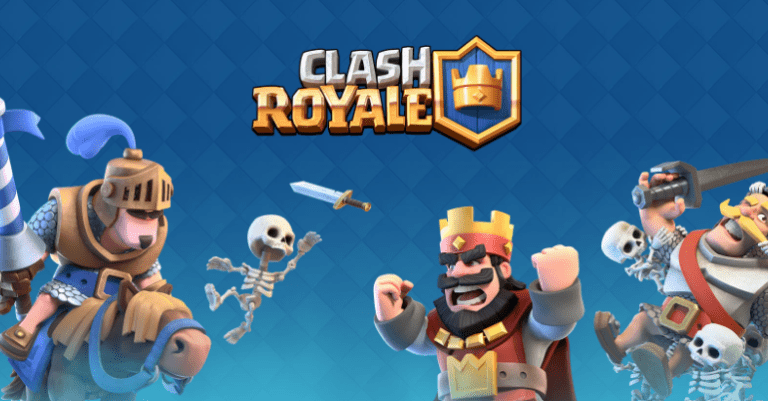
Mobile multiplayer fans would get their hands on not one, but two innovative mobile titles in 2016 – Supercell’s follow-up to Clash of Clans – Clash Royale, and Niantic’s revolutionary Pokemon Go, which would use augmented reality as the basis of its gameplay.
A gamesindustry.biz article asserts that Clash Royale’s innovative gameplay powered it to displace lacklustre titles from the top of mobile grossing charts. Clash Royale cleverly combined aspects of tower defence, MOBA, and card-based battles to instantly become one of the top grossing games in the world a month after its release. Clash Royale offers accessible but deep gameplay, fast synchronous multiplayer that lasts only minutes, ending in a nail-biting stand-off between competitors, and well-integrated social elements. It is hailed as a smart game that rewards strategy and delivers a complex, tactical experience on a small screen. The game crossed $3 billion in lifetime player spending by 2020, and as of 2021, has been downloaded more than 500 million times.
While many of the games listed here bring interesting genres to mobile, Pokemon Go is altogether a different beast. Niantic used augmented reality to overlay Pokemon on real-life locations, which would be visible to players through their phone camera. A swipe of a ‘Poke ball’ would ‘capture’ the Pokemon. One of the biggest selling points of Pokemon Go was that players had to step outside to capture Pokemon – it was probably the first game that actually took place in real-life settings. The game garnered more than a 100 million players on mobile phones within a month of its release.
After reaching a certain level, players can experience the game’s multiplayer aspects – they can battle at a Pokemon Gym and join one of three colour-coded teams – red (Valor), blue (Mystic) and yellow (Instinct). The three teams vie for control of the strategic Pokemon Gyms around the world – not only do the Gyms host raids, but also allows your owned Pokemon to earn coins, which can be spent on upgrades and items at the in-game store. Updates to the Gym mechanic brought cooperative raiding and the chance to take down large-sized Pokemon together, and the game continues to get updates.

The game peaked at 232 million active players in 2016, and is still going strong – 71 million people played the game in 2021 and the game has been downloaded over 500 million times. The game has amassed $5 billion in lifetime revenue by 2021, and much of this revenue has come from the United States.
2016-2020: The Rise of Hero Shooters and Battle Royales
The first half of the decade saw the release of online multiplayers games so unique that it is difficult to imagine them sharing the same demographic. Of course, dedicated multiplayer fans would have played all these games to fully enjoy the variety on offer. In the latter half of the 2010s, online multiplayer games would be characterised mostly by the hero shooter and battle royale genres, though some unusual games, such as Sea of Thieves and Among Us, would make their mark on the online multiplayer genre.
The Rise of the Hero Shooter
Overwatch (2016)
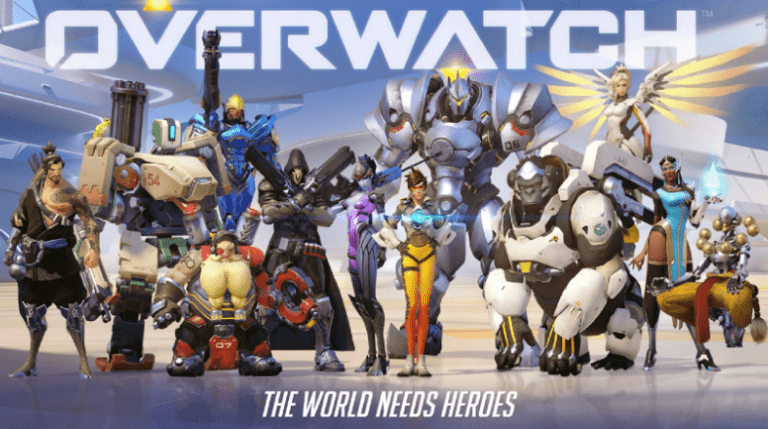
Overwatch has been imitated by multiple developers, and for good reason. The game’s distinctive roster of hero characters is not new – Team Fortress (1996) would also feature unique characters who performed different functions during competitive missions, but Overwatch took that concept and added MOBA elements to fashion the hero shooter as we know it today. The heroes of Overwatch have outrageous powers and going one-on-one against a single one of them would be difficult – but the 6v6 player structure ensures the game remains accessible – each team brings its own ridiculously overpowered band of heroes into play – each with their own special attacks that are easily learned by watching guides. Team-based plays revolve around one character facilitating the powers of one another in a special set of moves. Winning in Overwatch hence entails having an intimate knowledge of the strengths and weaknesses of the 32-character roster, knowing which hero can totally neutralise an opponent’s character, and managing your own weaknesses – your opponent knows as well as you do that each hero has a counter who can negate the hero. Within a year, Overwatch had made more than $1 billion, and had 30 million registered players, becoming Blizzard’s fastest-growing franchise. As of 2022, Overwatch draws in about 8-9 million players each month.
Multiple Games Adopt the Hero Shooter Formula
We discussed above that Rainbow Six Siege grew in popularity once it became a hero shooter like Overwatch. But Siege was hardly Overwatch’s only imitator. According to a PC gamer article, hero shooters have ‘become the de facto mould of what multiplayer shooters should look like in 2022.’
Rainbow Six Siege was one of the first games to adopt the hero roster formula, adding mercenaries and criminals to its array of ‘Operators’. The game now features far more female and trans characters. Each Operator, like a hero from Overwatch, has special abilities and even plays a critical role in PvE experiences. The game’s use of Operators ‘with more flair’ has been credited as one of the reasons for its turnaround after a bad launch.
Even games that have never been hero shooters have taken cues from Overwatch. The latest iterations of Call of Duty have featured distinct playable characters, while Battlefield 2042 changed the series’ anonymous classes into unique personalities. Even CS:GO, one of the most traditional first-person shooters, now has unlockable skins that let you enter battle by picking a favourite agent.
Apex Legends would combine the hero shooter with the other prominent genre of the late 2010s – the battle royale. We will deal with Apex Legends in our discussion of the battle royale genre below.
Valorant (2020)
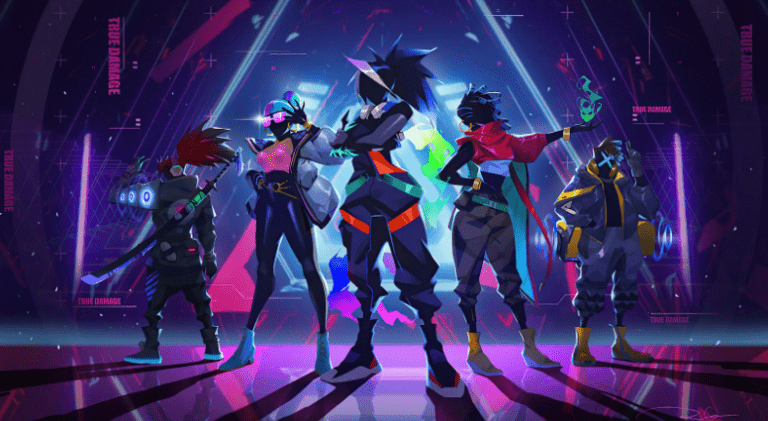
The hero shooter Valorant was Riot Games’ answer to titles like CS: GO, Rainbow Six Siege and Overwatch – a highly-accessible tactical shooter involving 5v5 matches where one team tries to plant a bomb known as the ‘Spike’ and the other works to stop them. The first team to win 13 rounds is the victor. In unrated games, if both teams have 12 wins each after 24 rounds, the 25th round serves as a ‘sudden death’ tie-breaker. In competitive games, if scores are tied after 24 rounds, a team has to win two consecutive rounds to secure victory.
Valorant differs significantly from the games that it draws inspiration from. Unlike the heroes in Overwatch, none of Valorant’s heroes will survive a critical shot. Each player is an agent with distinct abilities, one that is in-built, and two others that you can buy at the game’s beginning. Another ‘ultimate’ ability gets charged by surviving multiple rounds. Valorant is a traditional shooter in that kills are based on your aim and skill with a weapon. But the special abilities impart intel, create killing zones and can even blind opponents to give players a better chance at scoring kills. As such, mastering the game and winning the best of 25 rounds depends on both your shooting abilities and skillful deployment of special powers. This combination makes for gameplay that is a blend of control and chaos, and reviewers praised the game for breaking new ground. By January 2021, the game had overtaken CS:GO in earnings, and it is now a major esport and has drawn in nearly 20 million players per month for the last year.
Battle Royale takes Centre-Stage
Hero shooters such as Overwatch enjoyed massive popularity – until a new genre – the battle royale – began to grow in popularity. One of the biggest phenomena in gaming – Fortnite – is a battle royale that has since morphed into a metaverse-like experience, and we discuss the important battle royale games below.
PUBG: Battlegrounds and Fortnite (2017)
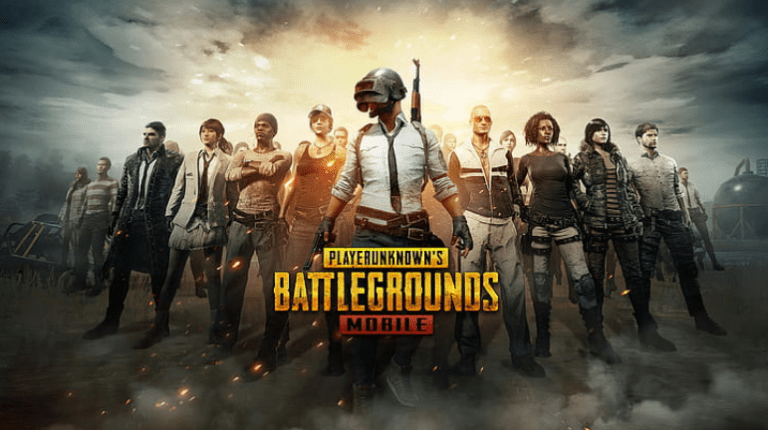
Like so many genres before it, the battle royale got its start as a mod – in fact, as a mod for a mod. DayZ fan Brendan Greene (known as PlayerUnknown) initially released a mod for DayZ where players were thrown into a shrinking map and had to kill each other until a last player remained. He would then use Arma 3’s resources to create a total conversion featuring battle royale, with an aircraft that dropped players into a large map to fight it out amongst each other. In 2016, Krafton studios invited Greene to create a standalone version, which would result in PUBG: Battlegrounds, earlier known as PlayerUnknown’s Battlegrounds.
The simple premise of PUBG (and other battle royales) may well be the reason for its enduring popularity. A number of players (upto a 100 in PUBG) are dropped to an area with no weapons and must hunt for arms in order to go up against other players. Weapons and other items can be looted off killed opponents as well, and the map size shrinks every few minutes, forcing the players closer together and increasing the frequency of PvP encounters. Players can enter the dropzone individually or play as teams, and must also choose the right time to parachute off the aircraft. As players kill off each other, the last player or team standing wins.
At over 75 million copies sold for PC and consoles, PUBG is the best-selling game on PC and Xbox One, and the fifth-best selling game of all time. Since 2020, the game has been drawing in a staggering 300-400 million players each month.
Fortnite Battle Royale – one of the most popular games in the world, and a cultural phenomenon in its own right – took direct inspiration from the success of PUBG. Epic Games realised that they could create a battle royale version of Fortnite with ease and released it after two months of in-house development. It had much the same gameplay as PUBG, though it also featured a building mechanic where players could construct structures to fend off attacks from enemies and traverse the game map. Within a year of its release, the free-to-play game had 125 million users and was making huge sums from microtransactions, making more than $9 billion by 2019, and making $5.8 billion for Epic in 2021. It has been drawing in more than 250 million players a month since 2020.
Fortnite is more than just a successful game – it transcends gaming with its live concerts, crossover events, skins from other important media franchises and more. Its huge registered player base of 400 million allows it to experiment with metaverse-like experiences, as we have discussed elsewhere.

Battle Royale Becomes a Craze
The massive success of the battle-royale mode spawned a number of imitators, both in the console/PC and mobile space. The first IP to join the bandwagon was Call of Duty, which introduced a battle royale mode called ‘Blackout’ in Call of Duty: Black Ops 4 (2018). Supporting up to 100 players, Blackout took place in the largest map yet in a CoD title and made full use of the fluid movement and controls of the franchise to create a fast-paced battle-royale mode that even drew in players already tired of battle royales.
Not to be outdone, Electronic Arts introduced a battle royale mode called ‘Firestorm’ to Battlefield V (2018), and, like Activision, featured the battle royale in the biggest map to date in a Battlefield game. The battle royale mode supports 64 players, who can compete in squads of up to four players.
EA then followed this up with a new IP (based partly on Titanfall) that combined elements of both the battle royale and the hero shooter in one addictive package: Apex Legends (2019). Legends is a gorgeous game with an incredibly detailed game map – knowing the map’s ins and outs confers a significant tactical advantage. It introduced many other innovations such as dropships, care packages (loot drops) and the highly efficient non-verbal ping-based communication between teammates. Each hero also brings distinctive playstyles to player squads, and a steadily growing roster of heroes keeps the game fresh. In a little over two years, it had 100 million players and has made more than $2 billion as of mid-2022.
Activision responded with Call of Duty: Warzone (2020), in which the battle royale mode predominated. While it featured much the same elements as the battle royale mode in Black Ops 4, it also encouraged players to amass Cash – in-game currency – in order to buy killstreaks and special items, and allowed upto 150 players to play in the free-for-all, in teams of up to four players. Within a year, the game had 100 million users and Warzone made nearly $4 billion in the first two years following its release.
Even mobile gaming is characterised by highly-successful battle royale IPs such as Fortnite, which began life as a cross-platform game released for PC, consoles and mobile, and PUBG Mobile (2018), which crossed $7 billion in lifetime revenue by 2021 and Garena Free-Fire (2017), which became the most downloaded mobile game in 2019, and has made more than $4 billion in the two years since its release.
Even a tetris game available on the Nintendo Switch – Tetris 99 (2019) – has battle royale elements, as does the open-world racing sim Forza Horizon 5 (2021), which offers the ‘Eliminator’ battle royale mode.
New Styles Emerge, Old Ones Return
The second half of the decade was not just an unbroken series of hero shooters and battle royales – they were merely the most popular genres around.
2018 saw the release of three innovative multiplayer titles, A Way Out, Among US and Sea of Thieves. The first featured only a two-player cooperative campaign, without any single-player version, and could be played in couch co-op mode or over the internet with a friend. The developer of A Way Out, Hazelight Studios, released another co-op game called It Takes Two in 2021, building on its formula of telling a compelling story purely through multiplayer mode.
Sea of Thieves is a rollicking pirate adventure with sea battles between player crews, and went on to become highly popular, holding its own against battle royales and hero shooters during the height of their popularity. It sold five million copies on the PC platform Steam by 2021 and has drawn in 15-17 million users per month since 2020.
The multi-platform game Among Us (2018) was yet another innovative title, which features asymmetric multiplayer – the game consists of a team of crewmates and a smaller team of impostors, both of whom look alike and work in the same area. The crewmates should complete all tasks in the allotted time or vote out all impostors, while the impostors should sabotage crewmate activities, kill crewmates without being detected or unleash a disaster that cannot be solved in time by crewmates. It was largely ignored upon release until pandemic shutdowns resulted in a massive spike in user counts – the game amassed nearly half a billion players in 2020, and has drawn in nearly 400 million players per month since late 2020.
The free multiplayer mode of Halo Infinite (2021), replete with classic Halo multiplayer elements and the new grapple-shot mechanic, became the most popular Xbox title on Steam within less than a day of its launch. In about a month, nearly 20 million players had joined the fray.
Games like Escape from Tarkov (beta release 2017) and The Cycle: Frontier (2022) also indicate the emergence of a new multiplayer play style, where players are dropped into common zones but can choose freely between co-op and PvP mode – there is no need to be the last man standing – each mission has its own objective quite apart from killing other players. Like DayZ, Tarkov and The Cycle are PvPvE matches – both the environment and other players pose a challenge, but you can cooperate with the latter.
The battle royale and hero shooter might be the biggest players in town, but game developers appear to have outgrown the need to copy the two genres.
The Pandemic and Multiplayer
Online multiplayer games – for PCs, consoles or mobile – draw in millions of players every month. It might be tempting to criticise them as addictive time-sinks, but the popularity of multiplayer during the pandemic tells a wholly different story.
According to the BBC’s Life Project, online multiplayer became a social lifeline during the pandemic lockdowns and gamers successfully built supportive communities around the games they loved, forging strong friendships. Playing with friends online has also been studied as a healthy replacement for in-person contact when lockdowns prevent such interaction.
Existing friendships have thrived and people have actually grown their network of friends during the pandemic via multiplayer, social gaming and connecting over the gamer-focussed Discord, a VOIP and instant-messaging platform – gaming gives people a way to share fun, light-hearted experiences during dark times. As a result, people have reported overwhelmingly positive experiences from gaming, especially thanks to its potential for social interaction via multiplayer. In fact, dedicated MMO players have reported feeling a strong sense of social identity, a higher sense of self-esteem and decreased feelings of loneliness even before the pandemic.
VentureBeat attributes the rapid evolution of the social aspects of mobile gaming to the pandemic, because such features allowed people to stay connected while socially distanced, as they played inexpensive but interesting mobile games together.
It is no surprise, then, that the gaming industry registered record gains during the pandemic, growing 12% to $139 billion in 2020 amidst widespread lockdowns. Despite a contracting PC and console market in the post-pandemic period, the overall industry is poised to grow at a compound annual rate of 11% through 2024 to hit a record $200 billion in worth.
Conclusion
Online multiplayer has grown massively this decade, with games supporting millions of players across platforms, with even mobile multiplayer coming into its own. While the pioneers of the previous decades had to innovate just to make multiplayer a viable option (remember the code optimizations for QuakeWorld and Unreal Tournament), the developers of this decade have worked hard to make the most of matured internet infrastructure.
After several innovative entries in the multiplayer genre, and the prominence of hero shooters and battle royales such as Overwatch, PUBG and Fortnite, we see an increase in variety, with titles such as The Cycle, Among US and the instant success Multiversus, which crossed 20 million players within a month of launching its open beta.
The success of such games suggests that new online multiplayer games can offer a wide range of experiences and maintain huge fan bases – not participating in a zero-sum game for the players’ attention, but adding to an overall online multiplayer experience far greater than the sum of its parts.
Gameopedia works with clients across the industry on custom requests and can provide in-depth data about online multiplayer games. Reach out to us for data that can yield novel insights about the billion-dollar online multiplayer gaming market.




